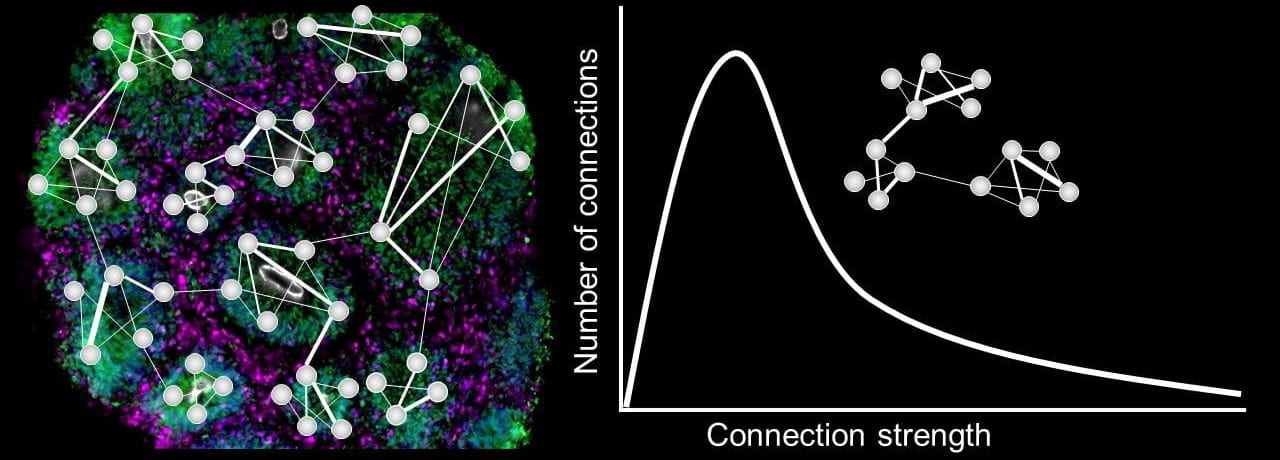Mapping human neuronal circuitry
Human brain function remains one of the greatest unsolved mysteries in science. This knowledge gap is a consequence of experimental inaccessibility to living human brain tissue and limitations of postmortem analysis which cannot reveal developmental changes or the brain’s functional wiring. Moreover, animal models fail to recapitulate many basic features of human conditions. These technical short comings have made the human brain one of the most challenging organs to treat medically. To overcome these challenges, we utilize 3D human stem-cell cultures, known as brain organoids, that closely resemble the cellular, anatomical and developmental features of human brain development. We interrogate brain organoid circuits using state-of-the-art neuro-electronic technologies (i.e. micro-electrode arrays) and employ optogenetic perturbations to map neuronal activity at single-cell resolution across thousands of sites. We utilize these large scale recordings and optogenetic manipulations to establish quantitative maps to uncover wiring principles that govern the construction of the human brain, which ultimately, give rise to our unique cognitive capacity.
Neuromodulation to understand how activity shapes brain circuit development
How does the developmental trajectory of neurons determine the long-term wiring of circuits and how do stimuli shape that trajectory? To decipher how temporal firing patterns of neurons alter functional connections, our research draws from expertise in physics/optoelectronics to enable optogenetic control of neuronal sub-types at the single-cell level. Combining these approaches will reveal a quantitative picture of how temporal firing patterns sculpt functional connections within neuronal circuits, how signaling drives large-scale transitions at the network-level, and ultimately how these dynamics govern brain development. Simultaneous monitoring and control of neuronal signaling at the network-level will enable us to harness the inherent adaptive computation of neurons to improve brain-machine-interfaces and synthetic biological intelligence through synergy with the robotics and machine learning expertise within the braingeneers team.
Accelerate bench to bedside therapy
Currently, research models of uniquely human neurological and psychiatric disorders are difficult to interpret and treat. Current understanding of their circuit dynamics is limited. The lack of incisive experimental human brain models has hindered therapeutic advances. However, modern genomics has led to a wealth of data on the genetic cause of these disorders. Among the causative genetic variants are deletions and duplications of large genomic segments associated with neurodevelopmental disorders. However, it is not yet known how gene expression alterations associated with these mutations impact functional circuitry in an anatomically relevant setting. The organoid system is highly suitable for testing brain-stimulation, drug and gene therapies that may restore neuronal signaling to a normal pattern and thereby identify therapeutic interventions to improve the wellbeing of affected individuals. To achieve this, we are working in synergy with geneticists, biologists and computational expertise within the braingeneers consortium. This work will enable our team to to establish quantitative links between environmental factors, functional circuitry and genetics, leading to a better understanding of the etiology of neurological and psychiatric disorders such as autism and schizophrenia.
